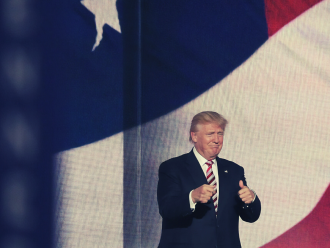This summer, investors do not need to visit a funfair to get the sense that they are riding a rollercoaster. Just last week, the Bank of England made history with a 0.5 basis point rate hike, the highest in 27 years, matched with the gloomy outlook of UK inflation reaching 13% by Q4 2022.
But this week, US inflation growth eased gradually, to 8.5%, largely driven by lower petrol prices. But the news was accompanied by US President Joe Biden proclaiming that core inflation, excluding volatile food and energy prices, was essentially flat last month. To the average US consumer, this news must have been the equivalent to promising them that they now drove a Porsche, if the tyres, engine and chassis of their car weren’t factored in. After all, food and energy are precisely the factors affecting them the most.
Stock market optimism
Stock markets did not need much to revert into optimism mode. The S&P 500 and Dow Jones jumped following the announcement of the news and even the FTSE100 in the UK responded positively, despite the gloomy news at home.
Investor buoyancy is not just driven by yesterday’s inflation figures. This month, the S&P 500 grew by 9.2% and the Dow Jones is also up by more than 6%. Bad news for those who may have de-risked their portfolios early.
This jumpiness may have hit retail investors the hardest, while many institutional investors have stayed put or used derivatives to hedge the risk. Data on retail fund flows provided by the Investment Association show that retail investors on the Hargreaves Lansdown Platform withdrew more than £2bn from equity funds in June alone.
This chimes with a cascade of bad news since the beginning of this year, which has overall wiped more than $18trn (£14.7trn) of global financial market capitalisation in H1 2022, according to the World Federation of Exchanges.
Inflation outlook
But there are also indications that many large-scale investors are not exactly exiting the market, but instead attempting to hedge the risks. Volumes of derivatives contracts have shot up to $14.63bn (£12bn) in H1 2022, a 34% increase year on year, according to the World Federation of Exchanges.
Inflation figures, and their impact on monetary tightening will be a decisive factor for investors. The trouble is that they just can’t seem to work out which way the wind is blowing. Trading data on US Federal Reserve Fund Futures suggest that derivatives traders now price in a potential rate cut over the next 12 months, essentially speculating that global inflation pressures could ease.
But that there is good reason to believe that this may be overtly optimistic. When driving a car, minor details such as the engine, chassis and tyres matter. And when measuring inflation, the price moments in energy and commodity markets do have an impact. And when it comes to energy prices, there is little room for improvement, particularly in the UK, which relies heavily on importing gas and is therefore more vulnerable to rising gas prices.
BoE challenges
This has of course been factored in by the Bank of England, when it announced last week’s rate hike. But it also predicted that UK inflation would climb down substantially over the next two years, with CPI inflation reaching 0.9% again in Q3 2024. This was largely due to global commodity prices normalising, the Bank of England predicts.
This could be good news for UK institutional investors, who will have kept a close eye on the monetary policy announcement. With the bulk of DB assets being invested in fixed income and inflation hedges having been far from effective, the past few months will have been painful.
And the initial market reaction to last week’s BoE announcement suggests that the rollercoaster ride for UK investors could be in for another downwards slope. Despite the high level of rate hikes, yields on 10-year gilts fell by 0.1 percentage point. This suggests market caution on whether the Bank of England can sustain its trajectory of rate hikes, given the scope of the cost-of-living crisis in the UK.
On the plus side, investors could benefit further from the pound falling against the dollar, which boosts the conversion of dollar denominated investments.
But falling gilt yields in an inflationary environment could potentially become a major headache. Indeed, the latest PPF figures show that the funding ratio, while still historically strong, have dipped for the first time in six months, to 118% from 120%, due to the slight fall in long-term gilt yields over the past months.





Comments